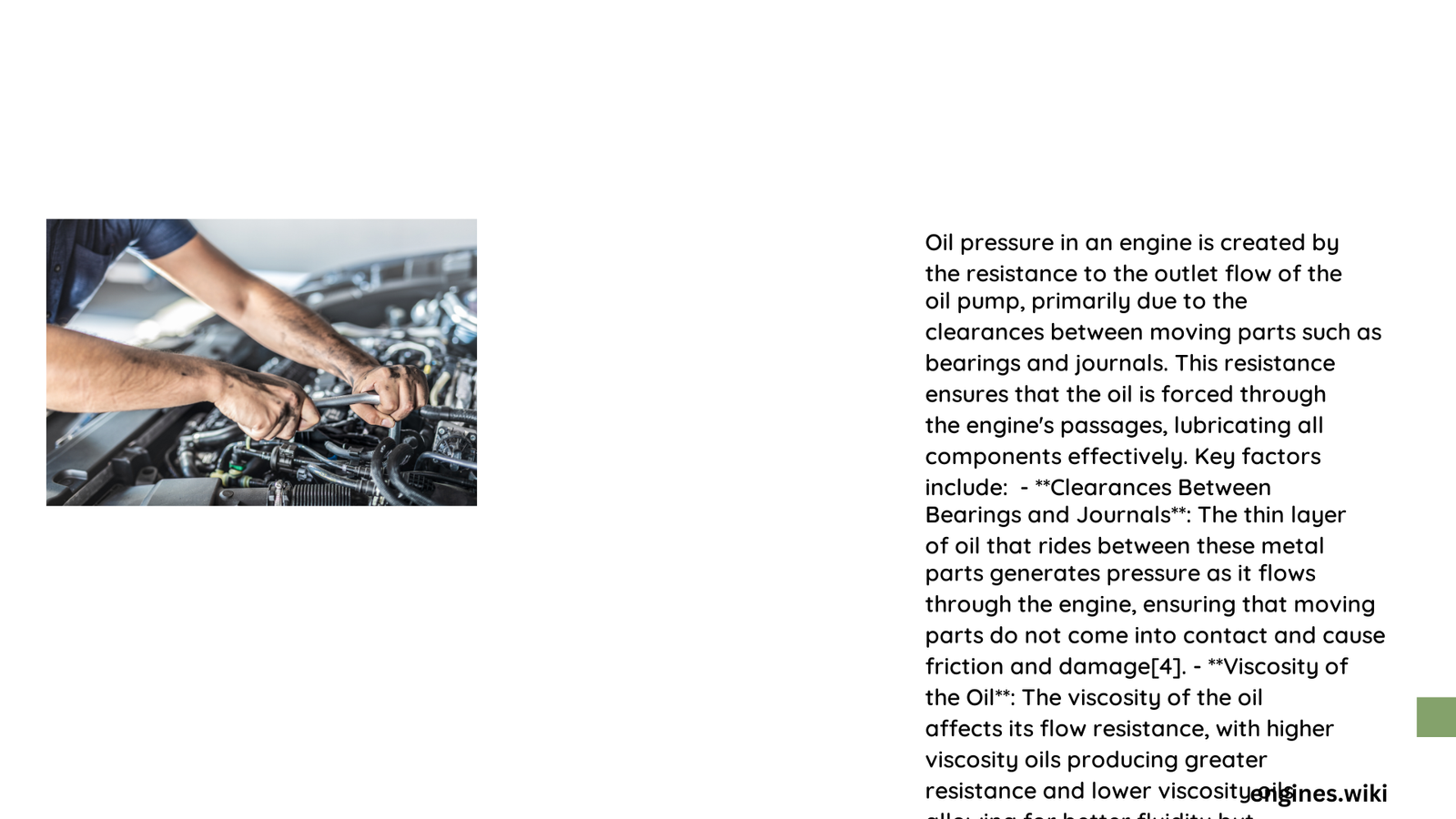Oil pressure in an automotive engine emerges from a complex interplay of mechanical components and physical principles. The generation of oil pressure is not a simple pumping action, but a sophisticated process involving precise clearances between metal parts, viscosity characteristics, and the resistance created within the engine’s lubrication system. Understanding these dynamics reveals how engines maintain critical lubrication under varying operational conditions.
What Generates Initial Oil Pressure?
Oil pressure fundamentally originates from the resistance encountered by oil as it flows through microscopic clearances between moving engine components. These minute spaces between bearings, crankshaft journals, and cylinder walls create back pressure that transforms the oil pump’s mechanical action into a pressurized lubrication system.
How Do Clearances Impact Oil Pressure?
| Component | Typical Clearance Range | Pressure Influence |
|---|---|---|
| Main Bearings | 0.001-0.003 inches | High Pressure Generation |
| Connecting Rod Bearings | 0.0015-0.0025 inches | Moderate Pressure Impact |
| Camshaft Bearings | 0.002-0.004 inches | Variable Pressure Effect |
Key Factors Determining Oil Pressure
- Mechanical Clearances
- Tighter tolerances increase resistance
- Wider gaps reduce pressure generation
-
Precision manufacturing critical for consistent pressure
-
Oil Viscosity
- Thicker oils create higher pressure
- Temperature significantly affects viscosity
- Recommended grades maintain optimal pressure ranges
What Role Does the Oil Pump Play?

The oil pump serves as the primary mechanical device responsible for circulating lubricant. Unlike popular misconception, it doesn’t directly create pressure but generates flow that encounters resistance.
Types of Oil Pumps
- Gear Pump
- Most common design
- Uses intermeshing gears
-
Reliable and straightforward mechanism
-
Rotor Pump
- Utilizes rotating components
- Provides consistent oil distribution
-
Compact design advantages
-
Vane Pump
- Employs sliding vanes
- Adaptable to various engine configurations
- Efficient at multiple operational speeds
How Does Pressure Relief Mechanism Work?
Pressure relief valves act as critical safety components, preventing excessive oil pressure that could damage engine components. These valves typically open between 40-80 PSI, redirecting excess oil flow and maintaining stable system pressure.
Pressure Regulation Dynamics
- Lower Limit: Minimum pressure required for proper lubrication
- Upper Limit: Maximum pressure before potential mechanical damage
- Operational Range: Typically 20-60 PSI during normal engine operation
What Influences Long-Term Oil Pressure Stability?
Several interconnected factors contribute to maintaining consistent oil pressure:
- Regular maintenance
- Proper oil selection
- Clean lubrication system
- Minimal wear on engine components
- Consistent operating temperatures
Diagnostic Considerations
- Sudden pressure drops indicate potential mechanical issues
- Consistently low pressure suggests wear or pump failure
- Intermittent pressure fluctuations might signal filter blockages
Technical Insights
Oil pressure represents a dynamic equilibrium between mechanical design, fluid dynamics, and operational conditions. Engineers meticulously calculate and design these systems to ensure optimal lubrication across diverse environmental and operational scenarios.
Precision Engineering
Modern engines require increasingly sophisticated lubrication strategies, with tolerances measured in micrometers and pressure management systems becoming more advanced.
Conclusion
Understanding oil pressure generation involves appreciating the intricate interactions between mechanical components, fluid properties, and precision engineering principles.
